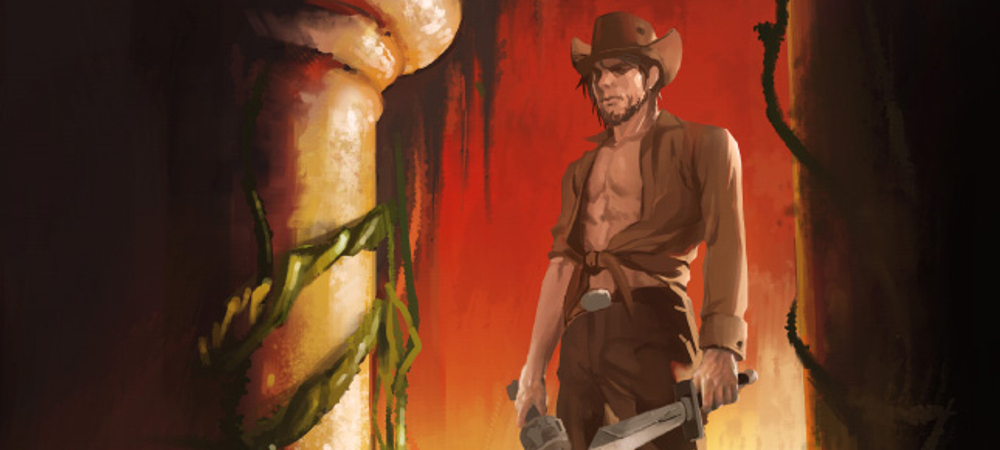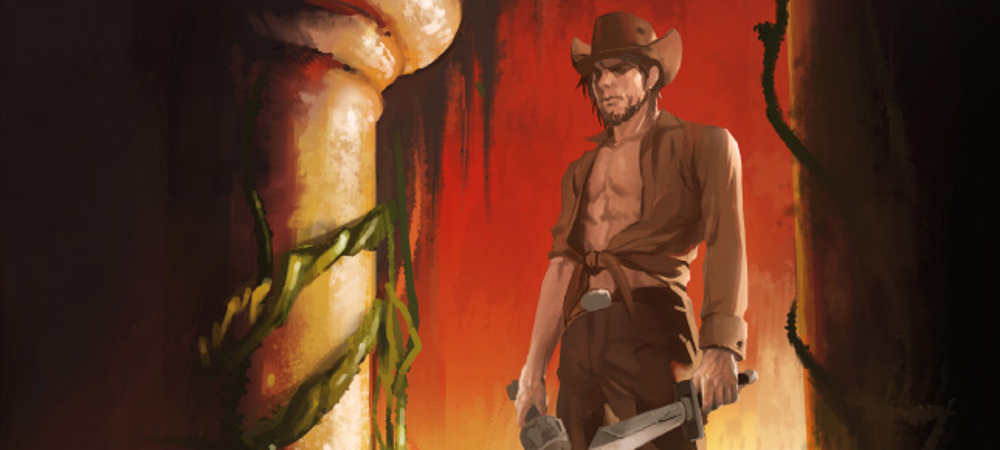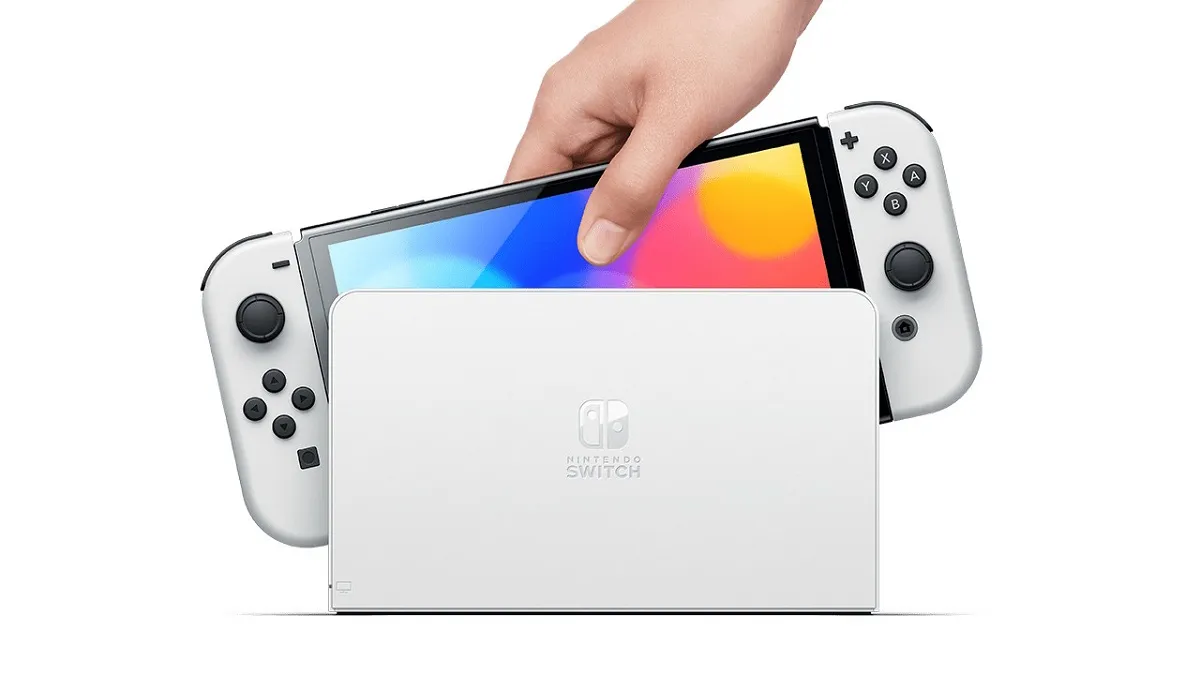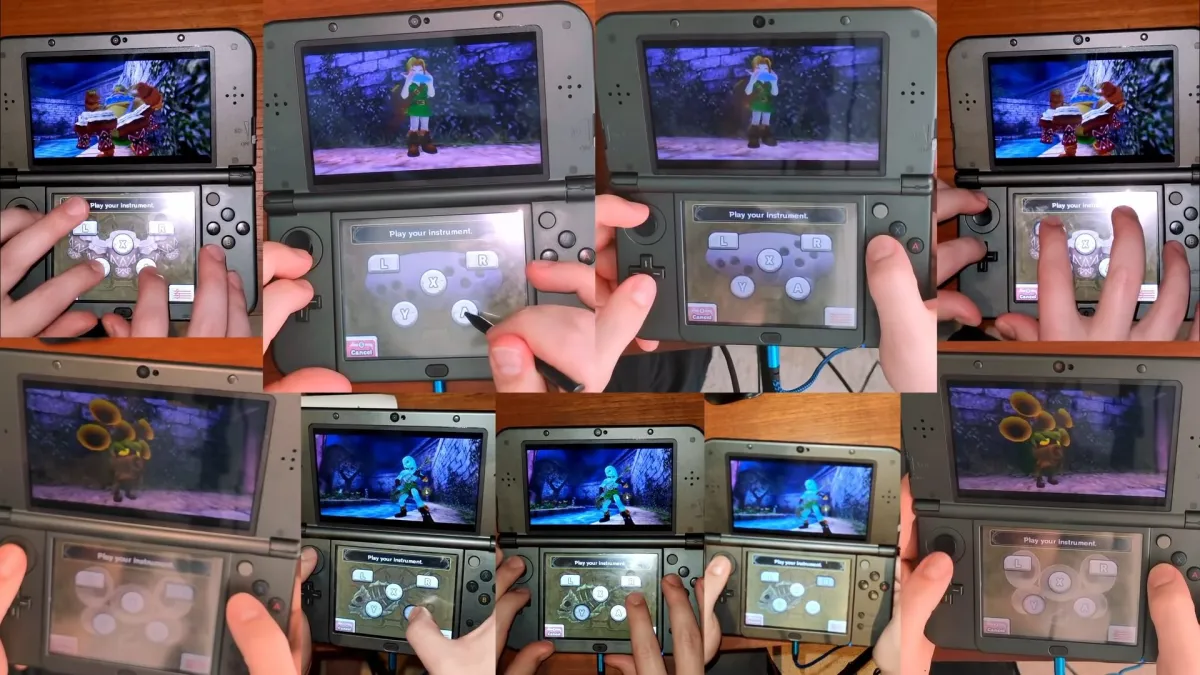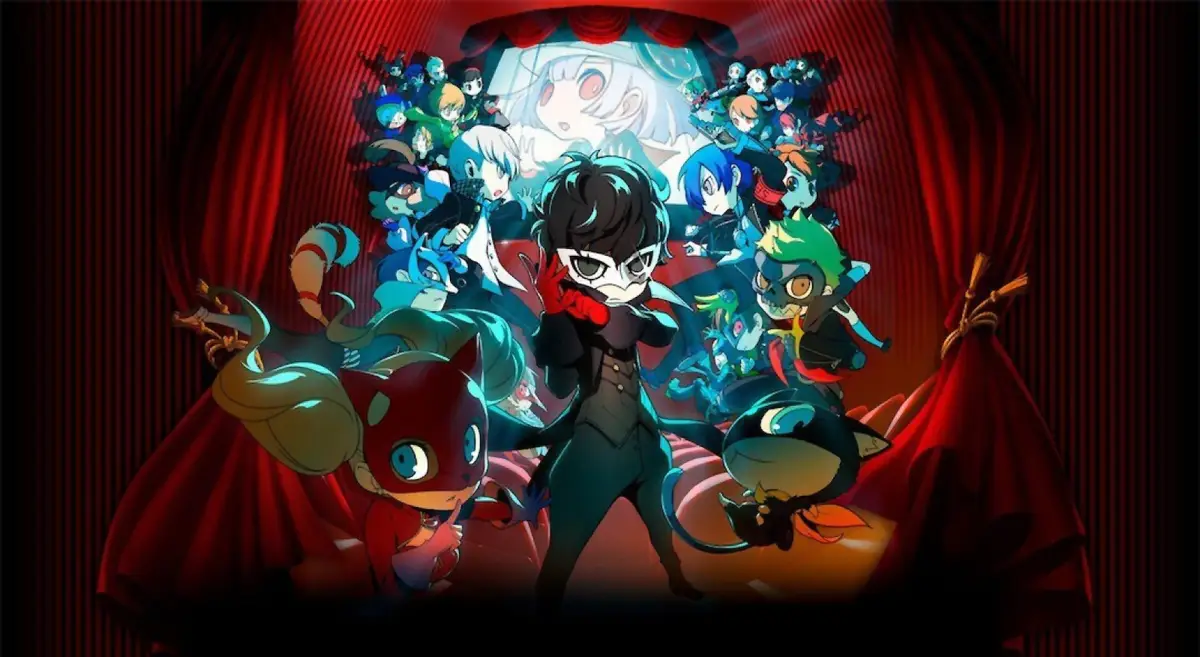Super Smash Indiana Jones Bros.
I’m angry that I had to write this review of 1001 Spikes, as I would have rather spent this time playing more of it. That anger makes me all the more similar to the game’s titular hero Aban Hawkins. Neglected and disrespected by his famous father and stuck in the shadow of his intelligent and responsible sister, he’s got every reason to be a grump. This is a man with something to prove and he doesn’t care how badly he’s going to get hurt in the process. He’s not going to stop until he shows the world that nobody and nothing can keep him down.
Aban’s story is a perfect fit for the world of hurt he runs into headfirst. 1001 Spikes is a game of endless danger, a place where eye contact with death is a near constant. The game fights you nearly every step of the way, but it always fights fair, making each small victory feel like a life affirming success. Those who can summon the bravery to risk the challenges here are bound to discover that they are capable of more than they had given themselves credit for.
For the tenacious, nothing is impossible.

Aban Hawkins and the 1001 Spikes (Steam, PS4, PS Vita, Xbox One, 3DS, Wii U [reviewed])
Developer: Nicalis, 8bits Fanatics
Publisher: Nicals
Released: June 3, 2014 (Steam, PS4, PS Vita, 3DS, Wii U) June 10, 2014, (Xbox One)
MSRP: $14.99 ($10.01 Nicalis loyalty discount on 3DS, Wii U, and Steam )
1001 Spikes is a game that frequently scares you into thinking that you are not good enough for it, but after powering through those initial moments of intimidation, you’ll find it’s no more frightening than Tetris. You don’t need incredible skills or luck to win. You just need to apply the right moves into the right place at the right time, and all your problems go away. This is part of the thinking that went behind the game’s unconventional “two jump buttons control” scheme. One button is for high jumps and the other for shorter hops. High jumps may seem universally superior, but they aren’t always the best option. Like so many things in 1001 Spikes, forethought is required to choose the jump that is least likely to lead to a death.
Also like Tetris, 1001 Spikes offers seemingly endless variations on a theme of problems. Just when you think the game will have come up with the scariest, most insurmountable death trap possible, it will show you a new trap that’s even more nightmarish. Though it looks like it could have been an NES game, 1001 Spikes is so packed with content and concepts that it couldn’t ever be contained by a conventional cartridge. It also willfully ignores the cuteness within, with cut scenes heavily inspired by the serious-but-silly NES Ninja Gaiden games. It’s fitting that 1001 Spikes works so hard to seem so tough on the surface despite its underlying sweetness. In many ways, it’s a game that comes off like a guillotine but is really a swing set at heart.

Each of the first 30 stages of campaign mode contains a hidden or hard to reach Golden Skull which gives you an extra life and gets you one step closer to opening up a new stage or secret character. Though the skulls may be hard to reach, they’re always worth going for, as the extra life they offer cancels out any death you may encounter after snagging one. You can also skip levels, but you may not unlock everything the game has to offer if you do — and maybe worse — you’ll potentially miss some of the important play lessons that a level delivered.
The thing that is likely to shock people at first about 1001 Spikes is the surprise kills. Those trained to think that dying in a game is a harsh penalty may be put off at first, but with 1,001 lives to start with and very little ground to recover after losing a life, you’ll be back in the action again with very little loss to show for it. These surprise kills aren’t there to frustrate you. They are there to send a exciting message from the developers — “we think you’re smart and strong enough to learn how to survive.” You always have a split second warning before a trap is sprung upon you, and even the most fearful, clumsy players will be surprised to see how quickly they learn to anticipate and avoid traps that would have killed them moments before.

Incredibly well balanced, dynamic changes to the way levels are designed are so gradual that you may not notice it, but there is a huge difference in the psychology of earlier levels compared to later ones. The first levels teach you how to use your jumps, attacks, and surroundings to your best advantage. A few stages in, and you’re encouraged to learn how to assess a stage before trying to run right into it. This is acknowledged in Aban’s idle animation, where he looks at the player and shrugs his shoulders in confusion, letting you know that he’s also confused about how to best proceed.
A few stages after that, and you learn that it’s sometimes safest to ponder as you run, as the safest looking hiding spots are often the most dangerous. Even farther in you discover the science of “working smarter not harder,” that by applying confidence and wisdom, you can breeze though challenges would have previously seemed insurmountable. All these lessons are layered and entangled into each other, allowing for a hearty depth of experience.
After you finally master a stage, you’ll feel an intimacy towards it that’s analogous to learning an amazing song by heart. While it may not be fresh anymore, singing along with your own voice offers a separate kind of joy that just as satisfying as the feeling you had the first time, if not more so. Levels that had at one time appeared to be impenetrable become playgrounds for speed runs and collection of extra loot. The once lethal grizzly bear becomes a fuzzy friend to ride and cuddle as you see fit.

If you find taking on the challenge alone to be too tense, campaign mode has drop-in/out multiplayer where you can use one of the game’s many unlockable characters. Most of these hail from other tough-but-fair 2D platformers (Cave Story, Knytt Stories, Nyx Quest, Bit.Trip, Tempura of the Dead), though there are a few curve balls you may not have seen coming, including some other members of the Hawkins family and a well known game developer who is no stranger to witnessing a blow up or two.
There are also additional outfits for Aban that completely change the way he plays, themed after classic games like Castlevania, Street Fighter, Ikari Warriors/Contra, Ghosts ‘N Goblins among others. Some of these outfits are platform specific, which is why I lean towards recommending the 3DS/Wii U version of the game, as the Mario-themed costume and music is tough to beat, but fans of Halo or Uncharted may want to stick with the Steam/Xbox One or Sony console versions respectively.

All of these guest characters and legacy tributes play just as they do in the games they originated from. Nyx can fly with multiple jumps in a semi-Kirby style flutter, “Mario” Aban can stomp enemies and throw fireballs, Curly Brace has her machine gun and booster, “Fighter” Aban has a shoryken, hadouken, and tatsumaki senpuu kyaku, and so forth. Their cut scenes and music fit them all perfectly too. Cave Story fans will definitely want to finish the campaign mode as Curly, as her story appears to fit perfectly in the larger narrative of that game’s world.
1001 Spikes campaign mode has more than twice the content as the original game on XBLIG, but that’s just the start of the new stuff you’ll find here. Beyond the campaign, there are three all new unlockable games, each of which start with Aban, Vampire Slayer Aban, Knight Aban, and Mario Aban unlocked (if you’re playing on a Nintendo console). These games share the basic mechanics of campaign mode while going about other things very differently than the rest of the package.
First there’s the Tower of Nannar, a largely vertical adventure with an all new story, bosses, music, environments and enemies. Like everything in 1001 Spikes, you can play it alone or with up to four friends. The style of the game is much more traditional than the campaign, with much longer levels, 9 lives per character, in-level respawns, fewer surprise deaths, and unlimited continues. It wont take most players to long to clear it, but it was meant to be replayed multiple times, as it’s a great place to farm for gold (for purchasing new costumes for Aban) and practice your skills with new characters.

The same goes for the The Lost Levels mode, an extended re-imagining of the campaign but with longer levels that appear specifically designed to maximize the fun of the multi-player. You get 101 lives here, and no continues, so the tension is turned up a bit, though there are fewer stages in total than in campaign mode. Stages here are longer than in campaign mode, but shorter than Tower of Nannar, offering a more densely packed series of opportunities for unlockable characters to use their special abilities to their fullest. Also, secret tip — if you want to change who you’re playing as in Tower of Nannar or The Lost Levels, hit L or R to scroll through your options. After you die or get to the next level, you’ll start as the character you selected.
The Steam, Xbox One, PS4, and Wii U versions include the multi-player combat arena mode “Golden Vase,” where players have unlimited lives and compete against each other for gold. You can play it single player too — but it’s just you sitting in a room, avoiding some bats and fireballs while you hit a vase and steal some coins from it. It’s not very satisfying without friends, but that’s clearly not how the game was meant to be played. It’s at its best with four people, pretty good with three, and with two, it’s a little too light on variables, a little like playing tag with just one other person. 3DS and Vita owners aren’t missing out on anything huge by not getting The Golden Vase, but if you have three or four people around, you’ll have a good time with it.

Sadly, the Wii U version isn’t all it could be at the moment. There is no off-tv play, a few bugs that cause the game to freeze (though you won’t lose any progress), and there’s limited controller options for multi-player (only the Wii U Pro Controller and Gamepad are currently supported). That’s all going to change in a soon-to-be released patch, but if you were shooting to play the game with friends but don’t have a Wii U Pro Controller, you may want to get the game on Xbox One, PS4, or Steam instead. Personally, I think the Wii U version is still worth it just for that Mario costume (he even has a secret hammer attack!), but that’s definitely not going to be true for everybody.
There are a few other things that may bother people depending on their tastes. Playing through single player campaign again with new characters can feel a little less rewarding, as the golden skulls have been replaced with coins, and once you’ve collected a coin with one unlockable character, it wont be there when you play through with the others. In general, the 1001 Spikes in-game economy can feel a little unbalanced, as you can get the most coins for playing through later levels in the campaign with a new character, and not so many coins for playing the other modes.

Some may also be disappointed that there aren’t more common enemies and boss fights in campaign mode. Most worlds don’t end with a climactic battle, and instead give you a threat-free safe zone to collect your nerves (and potentially 50-250 extra lives). I consider that perfect pacing, as the rest of the game is so relentless in its active engagement with the player’s stress hormones, but on the other hand, the boss fights we do get here are fun enough that it’s fair to want a few more. Maybe we’ll see something like that in the rumored super-update later this year that’s maybe going to include a bunch of new characters and other awesome stuff. Time will tell.
If you’ve gotten this far into the review and haven’t made up your mind on the game yet, you’re probably wondering if 1001 Spikes will be too punishing for you to handle. I think that depends largely on what perspective you choose to apply to your play through. To call the game punishing would be to focus too much on the negative space in the game’s design, ignoring the positive outcomes that are formed in that space. You will be “killed” in 1001 Spikes, but death here is not a harsh punishment. In fact, sometimes its a reward in and of itself, as those deaths often come about in hilarious, ingenious ways. It’s those deaths that bring the game to life.

Like Dr. Wily or Jigsaw from the Saw films, the temple designers of 1001 Spikes put a lot of thought and care into all the ways they’ve planned to kill you. They want you to feel smarter, braver, more patient, more skilled, and closer to them as artists as you unravel the puzzling deathtraps that they’ve created. You must truly get inside their minds in order to fully deconstruct the monstrosities that they have built for your desperate pleasure, and ideally, you’ll know yourself and the developers of the game better for the experience.
This is a game that will have you thinking about how intense, perplexing, and perfect it was for days. Like a tiny mouse says early in the game — “the harder the victory, the greater the joy of success”.
